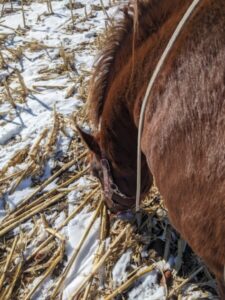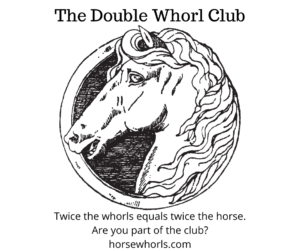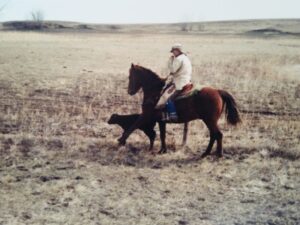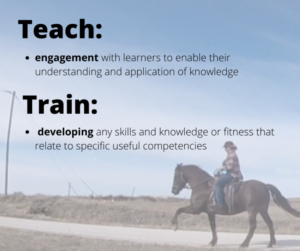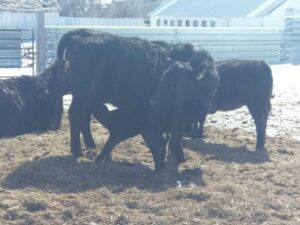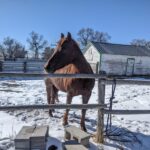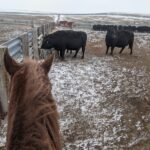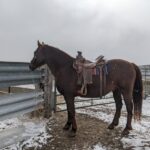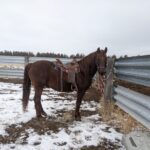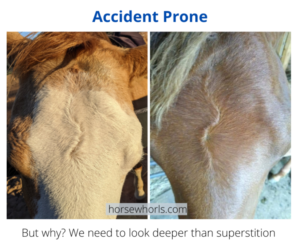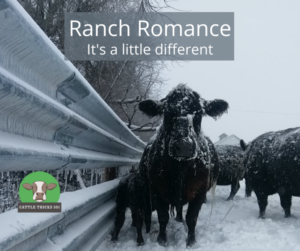So what does it look like to work a ranch horse who is trained using positive reinforcement? I spent the morning sorting cattle and had plenty of time to ponder the differences.
For the most part it looks just like it does to work with any other ‘normal’ ranch horse. Some of the differences are subtle. You might not notice at first that I’m wearing a treat bag. I keep it stuffed with cookies for my horse that my pet cows and goats will also like if we should have a chance to stop and visit. There are times my horses always get cookies. After getting a gate and when I get back on. There is a large amount of getting off and I appreciate that he will position himself nicely next to whatever I use as a mounting block. Because I want to insure that he keeps doing that I reward it generously.
Some of the differences are more noticeable. Even though Rusty is nearly ten he and I haven’t gotten to do as much cow work as I would have liked. He’s still really green when it comes to this stuff. That means that when we have time and he turns good with a cow I click him and reward. There were a few times this morning when we didn’t technically have time. We needed to get up there and catch up with the heifers we were sorting out. He did such a good job, sitting on his hindquarters and turning on his own, I clicked him anyway and took the time to give him a cookie. We got caught up with the heifers, they could only go so far, and because we didn’t go charging after them they had stopped or at least slowed and the work went smoother because we went slower.
Taking that time meant that after a few good turns Rusty was doing it on his own. I had been able to explain to him exactly what I wanted him to do. And he did it. A few times in and he slammed on the breaks, turned, and took off after a heifer so fast that I had to reach up from my perch nearly on top of the cantle where he was leaving me behind, grab mane and try to stay with him until I could click and reward big time.
Doing ranch work on my positive reinforcement trained horse teaches him so many things that he wouldn’t learn if we just focused on our +R training. Rusty has been learning to run full out on a loose rein, then come back to a stand still or a slow creeping walk and to do it calmly and quietly. He is learning to control and watch his feet across slippery and uneven footing. He is learning to listen to me as I give tiny exact cues to get him in just the right position to split two cows standing next to each other. He’s learning to take advantage of a chance to stand and rest, even if he had been going hard and fast just before.
Ranch horses work hard. Just like us there are times that we don’t want to work, even to get that paycheck, there are times they wouldn’t do the work. Not even for a cookie. There’s no way to do this job well using pure positive reinforcement. Pressure is used judiciously. Between the reins to cue and hold him back when he would want to charge through the middle of the bunch, and legs and seat helping move a shoulder around, telling him to GO now and do it fast, and slowly working to take the place of the reins in large part. He isn’t scared of the pressure, he isn’t bothered by it.
Ranch work adds to our other training and positive reinforcement adds to our ranch work. There’s no reason not to combine rewards with work. They each aid the other so nicely.
The benefits of using treats shows up in unexpected ways. After unsaddling Rusty where my saddle is stored so I didn’t have to carry it as far I turned him loose so I could put it away. With the whole yard to wander, he went to the hitching post where he gets tied to be saddled and brushed and waited for me there. What a good pony.
